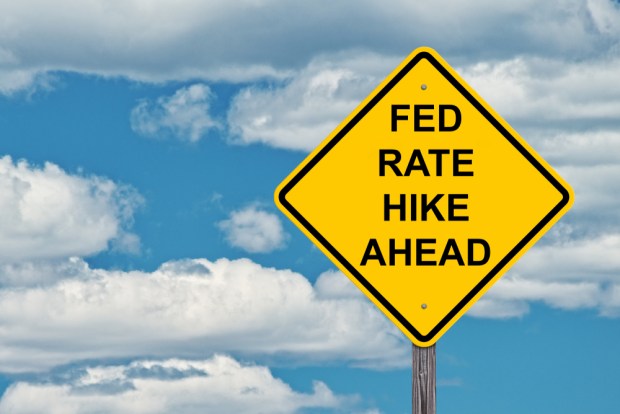Fed Rate Hike Hits Consumer Confidence

Last week brought a confluence of economic headlines that are slated to hit the consumer right where it hurts: the wallet – and perhaps the sentiment/propensity to open those wallets.
No doubt you know by now that the Federal Reserve voted to boost the federal funds rate by a(nother) quarter of a percentage point.
That rate is what is charged to banks when they borrow money, and now it goes from 2 percent to 2.25 percent. The key now, as it pretty much has been for, well, a long time, is for banks to bring that increase on funding costs to end consumers. In other words, they pass costs along in the form of higher rates. And those higher rates shift to borrowers who buy all manner of things, from autos to houses – and to those, of course, who carry debt and credit card balances.
The end-of-September hike marked the third rate increase, and conventional wisdom looks for a fourth hike this year.
First things first. Even with the rate hikes seemingly coming quickly, each on the heels of the other, it should be noted here that the rate itself has been coming up off historic lows, where the rate has been effectively zero for quite a while.
Still, when coming off a base of near-zero, add enough basis points to the charge on borrowing money, and it starts to add up. Enough to be a brake on the consumer – which, as widely reported, has been the engine behind two thirds of U.S economic growth.
As has been noted in this space, the credit card debt carried by individuals in the U.S. has mushroomed to more than $1 trillion. Sources such as CreditCards.com report that the average interest rate as measured just before the hike stands at just under 17 percent. Rates will go up in tandem, of course. The rate hike means that another 25 basis points, on each trillion of debt out in the field, comes to $2.5 billion in additional interest charges annually.
This comes against a backdrop where, as PYMNTS noted in August, the rate of delinquencies on credit card debt have been climbing, from a low seen in 2010 to as much as $8 billion this year.
Another loan type that is above the trillion-dollar mark is auto loans. As noted by CNBC, the average five-year new car loan is 4.8 percent, up from 4.3 percent just a few years ago. Auto prices have been on the rise, and a financed purchase of a car could cost as much as $6,500 in interest over the life of a loan, as estimated by firms such as Edmunds.
And yet: Consumer confidence remains at its highest level in the last 18 years, where the reading of 138.4 is within sight of the all-time peak of 144.7 seen back then. It’s likely that some wealth effect (i.e., through the stock market) is in play here.
Also, keep in mind that data released Friday (Sept. 28) shows that U.S. consumer spending grew by 30 basis points in August – which, yes, is still growth, but somewhat relatively anemic. The 30 basis point gain is a slowdown in August from July, when the growth was 40 basis points. Adjusted for inflation, the amount is even lower, at 20 basis points. The gain in August is the smallest seen in six months, and it mixed expectations by 10 basis points.
So, yes, optimism may be high, and spending still robust … but it is slowing. The savings rate is 6.6 percent, which is down from more than 7 percent earlier in the year. This means there is not as much saved up to take care of emergencies, or to meet sticker shock if (perhaps when) it comes. The tipping point may not be here – but we are likely tipping toward one.
